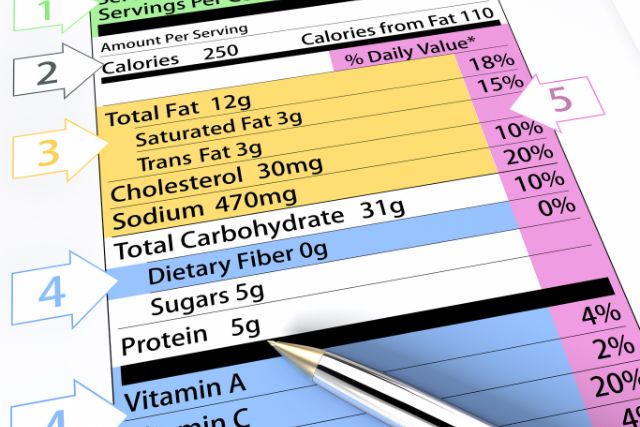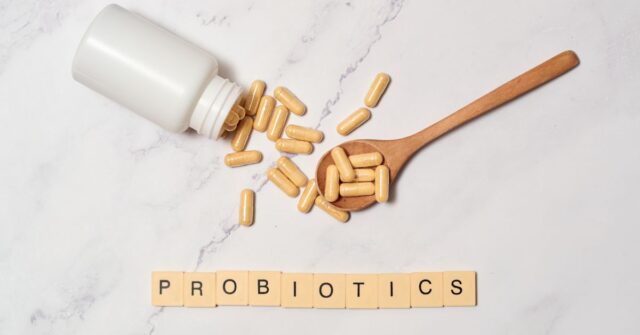Understanding dog food labels is essential for ensuring your furry friend gets the best nutrition possible.
This guide will walk you through everything you need to know about decoding these labels, so you can make informed decisions about your dog’s diet.
Introduction
As a dog owner, you want to give your pet the best life possible, and that starts with the right nutrition. Dog food labels can be confusing, but with a bit of knowledge, you can navigate them with confidence.
Let’s dive into the world of dog food labels and uncover the important details you need to know.


Understanding Ingredients
The ingredients list is a crucial part of a dog food label. Ingredients are listed in descending order by weight, meaning the first few ingredients make up the bulk of the food.
Knowing what to look for can help you choose a high-quality product for your dog.
How Ingredients Are Listed
Ingredients on dog food labels are listed by weight, with the heaviest ingredients first. This means that ingredients with high water content, like meat, will appear at the top of the list.
However, this doesn’t always indicate the quality of the food. It’s important to look beyond the first few ingredients to get a full picture of what’s in the food.
The Importance of the First Three Ingredients
The first three ingredients on the list are key indicators of the food’s quality. Look for specific protein sources like “chicken” or “beef” rather than vague terms like “meat meal.”
Avoid foods where grains or fillers are listed first, as this often means the food is lower in protein and higher in carbohydrates.
Common High-Quality Ingredients
High-quality dog foods often include whole meats, fish, and vegetables. Ingredients like chicken, lamb, salmon, sweet potatoes, and peas are signs of a nutritious diet.
These provide essential proteins, fats, and carbohydrates that your dog needs to stay healthy.
Ingredients to Avoid
Be wary of ingredients like “meat by-products,” “corn syrup,” and “artificial preservatives” such as BHA and BHT. These can indicate lower-quality food and may not provide the best nutrition for your dog.
Instead, look for natural preservatives like vitamin E (mixed tocopherols) and vitamin C (ascorbic acid).
Decoding the Guaranteed Analysis
The Guaranteed Analysis on a dog food label provides information about the nutrient content of the food.
While it can be helpful, it’s important to understand its limitations and how to use it to evaluate the food’s nutritional value.


What Is Guaranteed Analysis?
The Guaranteed Analysis lists the minimum and maximum percentages of key nutrients in the food, such as protein, fat, fibre, and moisture. This information can help you compare different foods and ensure they meet your dog’s nutritional needs.
Understanding Protein, Fat, Fiber, and Moisture Levels
Protein and fat are essential for your dog’s health. Look for foods with higher protein and fat levels, especially if your dog is active.
Fiber helps with digestion, while moisture content can affect the food’s shelf life and palatability.
However, keep in mind that the analysis doesn’t specify the exact amounts or the quality of these nutrients.
Limitations of Guaranteed Analysis
The Guaranteed Analysis doesn’t provide the complete picture of a food’s nutritional quality. It doesn’t account for nutrient digestibility or bioavailability, which are crucial for your dog’s health.
Additionally, it doesn’t include information on vitamins and minerals, which are also important.
The Nutritional Adequacy Statement
The Nutritional Adequacy Statement on a dog food label indicates whether the food meets the nutritional requirements set by the AAFCO or similar organizations.
This statement is essential for ensuring your dog gets a balanced diet.


What Is the Nutritional Adequacy Statement?
This statement verifies that the food provides complete and balanced nutrition for a specific life stage (growth, maintenance, or all life stages).
It ensures that the food meets the minimum nutrient requirements established by regulatory bodies.
Role of AAFCO and Other Standards
The Association of American Feed Control Officials (AAFCO) sets nutritional standards for pet foods in the US.
In Australia, similar standards are promoted by the Pet Food Industry Association of Australia (PFIAA). These guidelines help ensure that pet foods provide adequate nutrition for different life stages.
Importance of Life Stage Nutrition
Different life stages have different nutritional needs. Puppies need more protein and fat for growth, while adult dogs require balanced maintenance diets.
Senior dogs may need foods with lower calories and higher fiber. Choosing a food appropriate for your dog’s life stage is crucial for their health.
Australian Dog Food Label Requirements
Dog food labels in Australia must comply with specific regulations to ensure they provide essential information to consumers.
Understanding these requirements can help you make better choices for your dog.


Overview of PFIAA Guidelines
The Pet Food Industry Association of Australia (PFIAA) promotes best practices for pet food manufacturing.
Their guidelines ensure that pet foods are safe, nutritious, and labelled accurately. These standards align with international guidelines, providing consistency and quality assurance.
Mandatory Information on Labels
Australian dog food labels must include the product name, ingredients list, Guaranteed Analysis, nutritional adequacy statement, feeding guidelines, and manufacturer information.
This information helps consumers make informed decisions about their pet’s diet.
Comparing Australian and International Standards
While Australian guidelines are robust, they also align with international standards from organizations like AAFCO and FEDIAF (Europe).
This ensures that Australian pet foods meet global standards of quality and nutrition.
Special Dietary Needs and Considerations
Dogs with special dietary needs require careful attention to their food choices. Understanding how to identify suitable foods can help you cater to your dog’s unique health requirements.
Identifying Food for Allergies and Sensitivities
If your dog has food allergies or sensitivities, look for hypoallergenic foods that avoid common allergens like beef, dairy, wheat, and soy.
Limited-ingredient diets can also help identify and manage food sensitivities by reducing the number of potential allergens.


Weight Management Foods
For dogs needing weight management, choose foods with lower fat and higher fibre content. These foods help your dog feel full while consuming fewer calories.
Look for labels that indicate the food is specifically formulated for weight control.
Life Stage-Specific Foods
Ensure you choose food that matches your dog’s life stage. Puppies, adults, and seniors have different nutritional requirements.
For example, puppy food typically contains higher protein and fat to support growth, while senior dog food often has fewer calories and added joint support.
Consulting with Your Veterinarian
Always consult your veterinarian when selecting a diet for a dog with special dietary needs. They can provide personalized recommendations based on your dog’s health status and nutritional requirements.
How to Read and Interpret Feeding Guides
Feeding guides on dog food labels help you determine the appropriate amount of food for your dog.
Understanding these guides is crucial for maintaining your dog’s health and preventing overfeeding or underfeeding.


Understanding Feeding Amounts
Feeding amounts are usually based on your dog’s weight and activity level. The guides provide a recommended daily amount, which you can adjust based on your dog’s specific needs.
Remember that these are general recommendations, and individual needs may vary.
Frequency of Feeding
The frequency of feeding can depend on your dog’s age, size, and health. Puppies typically need more frequent meals, while adults can be fed once or twice a day.
Follow the feeding guide’s recommendations but adjust based on your dog’s hunger and energy levels.
Adjusting Portions Based on Dog’s Size and Activity Level
Active dogs may require more food than sedentary dogs. Adjust portions according to your dog’s activity level and monitor their weight and condition regularly.
If your dog is gaining or losing weight, you may need to adjust their food intake accordingly.
Transitioning Between Dog Foods
When changing your dog’s food, it’s important to do so gradually to avoid digestive upset. A slow transition allows your dog’s digestive system to adjust to the new food.


Importance of Gradual Transition
Sudden changes in diet can cause gastrointestinal issues like diarrhea or vomiting. Gradually introducing the new food helps prevent these problems and ensures a smoother transition for your dog.
Step-by-Step Transition Guide
Start by mixing a small amount of the new food with the old food. Gradually increase the proportion of the new food over a period of 7-10 days.
For example, start with 25% new food and 75% old food, then move to 50% new and 50% old, and so on until you’re feeding only the new food.
Monitoring Your Dog’s Health During Transition
During the transition, monitor your dog’s stool quality, appetite, and overall health. If you notice any signs of digestive upset, slow down the transition process.
Consult your veterinarian if you continue to see issues. Consulting with your vet during this time can help address any concerns and ensure your dog transitions smoothly to their new diet.
Common Misconceptions About Dog Food Labels
Dog food labels can be misleading, and it’s important to separate fact from fiction. Here, we debunk some common myths and clarify what certain terms really mean.


Debunking Marketing Myths
Many dog food labels use marketing terms like “premium” or “gourmet” to attract buyers, but these terms have no regulatory definition and do not guarantee higher quality.
It’s more important to focus on the actual ingredients and nutritional content than on these buzzwords.
Understanding ‘Natural’ and ‘Organic’ Labels
The term “natural” often means that the food doesn’t contain artificial ingredients or preservatives, but it doesn’t necessarily mean the food is healthy.
“Organic” foods must meet specific standards for organic farming and processing, but this does not always equate to better nutrition. Look for certifications and understand what they truly represent.
Interpreting Health Claims
Claims like “supports immune health” or “promotes a shiny coat” can be appealing, but they should be taken with a grain of salt.
These claims are not always backed by scientific evidence and can sometimes be exaggerated. Always check the ingredients and nutritional information to verify these claims.
Conclusion
Reading and understanding dog food labels is a critical skill for any dog owner.
By paying attention to ingredients, nutritional content, and proper feeding guidelines, you can make informed choices that contribute to your dog’s health and well-being.
Remember, when in doubt, consult your veterinarian to ensure you’re providing the best possible nutrition for your furry friend.









